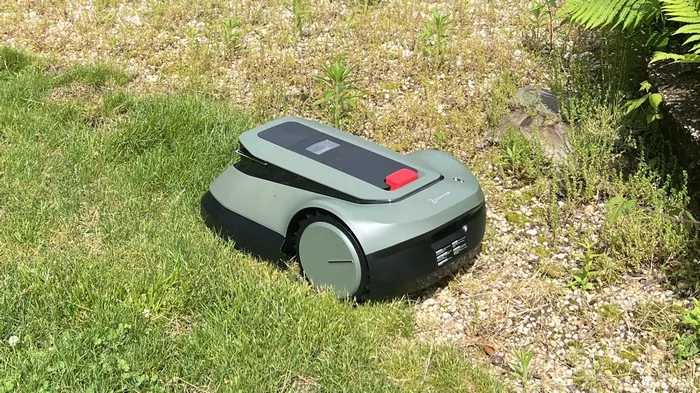Lawn maintenance is an essential part of landscaping and gardening. Among the many tools available, the reel mower is a classic and efficient option that has been used for over a century. Unlike modern rotary mowers powered by gasoline or electricity, reel mowers operate on a simple yet effective mechanical principle that delivers a precise and clean cut to grass. This article will explore the working principles of reel mowers, their advantages and disadvantages, types, and best practices for usage and maintenance.
How Does a Reel Mower Work
A reel mower, also known as a cylinder mower, operates using a set of helical blades arranged in a cylindrical pattern around a rotating reel. The primary working principle of a reel mower is the scissor-like cutting action it employs, which is different from the tearing motion of rotary mowers.
Key Components of a Reel Mower:
Reel with Helical Blades – A cylindrical assembly of blades that rotate when the mower is pushed forward.
Bed Knife – A stationary horizontal blade located at the bottom of the mower that works in conjunction with the reel to cut the grass.
Wheels – Provide traction and drive the rotation of the reel through a gear system.
Frame and Handle – The structure that supports the mower and allows the user to push it across the lawn.
Gears and Bearings – Enable smooth rotation of the reel while maintaining alignment with the bed knife.
When the user pushes the reel mower, the wheels turn gears connected to the reel, causing the helical blades to spin. As the spinning reel traps grass blades between itself and the bed knife, a clean and even cut is achieved, similar to how scissors work.
Advantages of Using a Reel Mower
Reel mowers offer several benefits over rotary mowers, particularly for homeowners who prefer an environmentally friendly and low-maintenance option.
Superior Cut Quality
Reel mowers produce a cleaner, more precise cut than rotary mowers, which tear the grass instead of slicing it. This results in healthier grass that is less susceptible to disease.
Eco-Friendly Operation
Reel mowers are manually operated and do not require gasoline, electricity, or batteries. This makes them an environmentally friendly choice, as they produce zero emissions and reduce noise pollution.
Low Maintenance
With fewer moving parts compared to rotary mowers, reel mowers require less maintenance. Regular sharpening of the blades and occasional lubrication of moving parts are usually sufficient to keep them in good working condition.
Cost-Effective
Reel mowers have a lower initial cost and do not require fuel or electricity. Over time, this translates to significant savings compared to gas-powered or electric mowers.
Health Benefits
Since reel mowers require physical effort to push, they provide a form of exercise while mowing the lawn.
Disadvantages of Reel Mowers
Despite their benefits, reel mowers also have some drawbacks that may make them less suitable for certain situations.
Limited Cutting Height
Most reel mowers have a cutting height limitation, making them less effective on tall or overgrown grass.
Manual Effort Required
Since reel mowers rely on manual pushing, they require more effort, especially on uneven terrain or thick grass.
Not Suitable for Large Lawns
For large lawns, using a reel mower can be time-consuming and physically demanding compared to motorized mowers.
Difficulty Cutting Twigs and Weeds
Reel mowers are not as effective at cutting twigs, weeds, or tough grass species, which may require additional trimming.
Types of Reel Mowers
Reel mowers come in various types to suit different user preferences and lawn conditions.
Manual Reel Mowers
These are the most common and simplest type, requiring physical pushing to operate. They are ideal for small to medium-sized lawns with even terrain.
Gas-Powered Reel Mowers
Equipped with a small gasoline engine, these reel mowers reduce the manual effort required and can handle larger areas more effectively.
Electric Reel Mowers
Powered by batteries or an electric cord, these mowers offer the precision of a reel mower with added convenience and reduced physical effort.
Tow-Behind Reel Mowers
Designed to be attached to tractors or ATVs, these are suitable for large areas such as golf courses, sports fields, and parks.
Best Practices for Using a Reel Mower
To ensure optimal performance and longevity of a reel mower, it is essential to follow best practices in its use and maintenance.
Mow Regularly
Reel mowers work best on shorter grass, so frequent mowing (at least once a week) is recommended.
Avoid Wet Grass
Mowing wet grass can clog the blades and make pushing the mower more difficult.
Adjust the Cutting Height
Ensure the mower is set to the appropriate cutting height for your lawn type.
Keep Blades Sharp
Regularly sharpen the blades to maintain a clean cut and avoid tearing the grass.
Clean the Mower After Use
Remove grass clippings and debris to prevent rust and maintain smooth operation.
Conclusion
Reel mowers are an excellent choice for those seeking a simple, environmentally friendly, and precise method of lawn maintenance. While they may not be ideal for large or unkempt lawns, their benefits in terms of cut quality, eco-friendliness, and low maintenance make them a valuable tool for many homeowners. By understanding their working principles and best practices for use, you can ensure a well-maintained lawn with a reel mower that lasts for years to come.

